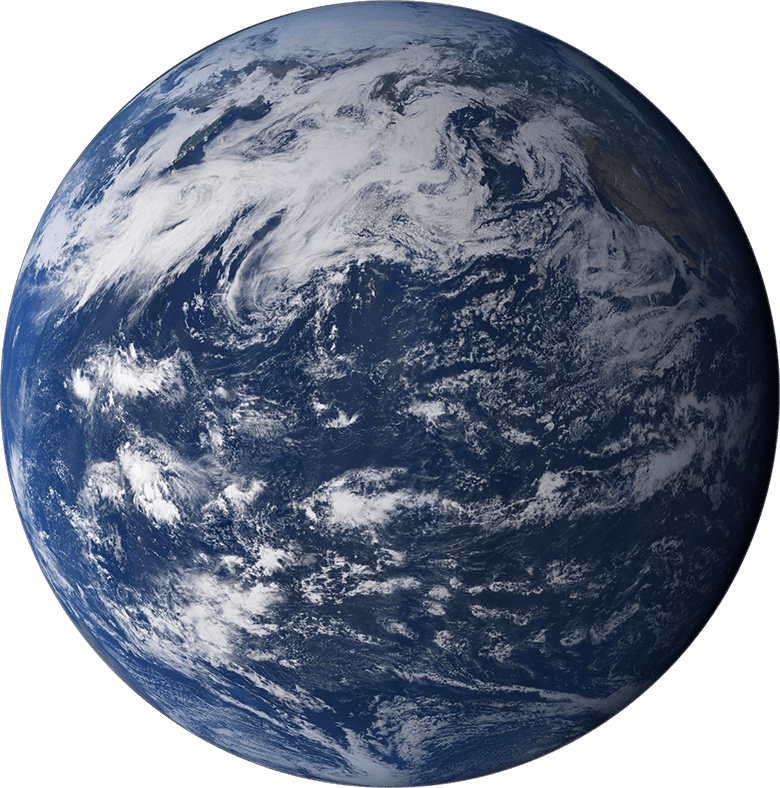THE EARTH
Earth observational data captures real-time insights on climate, weather, and environmental changes, driving decisions in agriculture, disaster management, and sustainability.
Data enables more informed decision-making across sectors, helping governments, businesses, and organizations implement proactive strategies for sustainability, disaster response, and climate change mitigation.
H2O
70% of the Earth’s Surface is Covered in Water. Measuring water data from space enables global monitoring of water resources, aids in climate change assessments, supports disaster management, and improves agricultural efficiency.
10,000 km
The Earth's atmosphere extends to about 10,000 kilometers (6,200 miles) from the Earth's surface. However, the troposphere (where weather occurs), the stratosphere (which contains the ozone layer), and the mesosphere, only extend up to about 80 kilometers (50 miles).

SPACE DATA NETWORKS
Space-based Earth observation systems provide real-time data on climate change, deforestation, sea level rise, air quality, and weather patterns. Swarm Satellites enable global communication, bridging gaps in remote and underserved regions.
Space-based communication is also critical for remote healthcare, education, and financial inclusion in rural areas. Data on solar activity can be collected by satellites to help monitor solar flares, coronal mass ejections, and other space weather phenomena.
Space Data is essential for predicting and mitigating the impact of space weather on Earth’s magnetic field, communication systems, and satellite infrastructure. It also helps protect power grids, GPS systems, and aviation from disruptions caused by space weather.

The Solar System is believed to have formed around 4.6 billion years ago from the gravitational collapse of a giant interstellar molecular cloud, often referred to as the solar nebula.
Space data on solar winds, magnetic fields, and the Sun’s activity helps scientists understand the behavior of our star, which influences the entire solar system. This research is crucial for space exploration and predicting space weather.
Instruments on space probes gather data on planetary atmospheres, including the detection of greenhouse gases (e.g., CO2 on Venus and Mars), helping scientists understand climate processes on other worlds and compare them to Earth’s atmosphere.
Space data helps track and study asteroids and comets, offering clues about the early solar system and the origins of water and organic molecules that may have played a role in the development of life on Earth.
THE SPACE

About 4.5 billion years ago, a Mars-sized body, often called Theia, collided with the early Earth. This collision caused a significant amount of debris to be ejected into orbit around Earth, which eventually coalesced to form the Moon.
MARS
Mars has a thin atmosphere composed mainly of carbon dioxide (95%), with traces of nitrogen (2.7%), argon (1.6%), and very small amounts of oxygen and water vapor.
Mars does not have a strong magnetic field, which means it is more vulnerable to solar wind and radiation.
The atmosphere is about 100 times thinner than Earth’s, offering little protection from solar radiation and making the surface much colder than Earth. Average temperatures are around -60°C (-80°F), with extremes ranging from -125°C (-195°F) near the poles in winter to 20°C (68°F) at the equator during summer.
The moons of doom
Phobos and Deimos: Mars has two small moons, Phobos and Deimos, which are thought to be captured asteroids. Phobos, the larger moon, is gradually spiraling inward and is expected to crash into Mars or break apart in about 30 million years.
Space data is a cornerstone of both space exploration and sustainability. For space exploration, it provides essential insights into planetary environments, resource availability, and the safety of human missions. For sustainability, it helps monitor and manage Earth's ecosystems, improve agricultural practices, respond to natural disasters, and track the impacts of climate change. The integration of space data into sustainable practices is a vital tool for addressing global challenges and ensuring a resilient future for Earth and beyond.
Balancing People, Planet and Prosperity.
Space data is used to track carbon emissions from various sectors, such as transportation and industry. Earth observation data can monitor greenhouse gas emissions in real-time, helping nations meet climate goals and transition to cleaner energy sources. Satellites also track solar irradiance, which is important for optimizing solar energy production.
